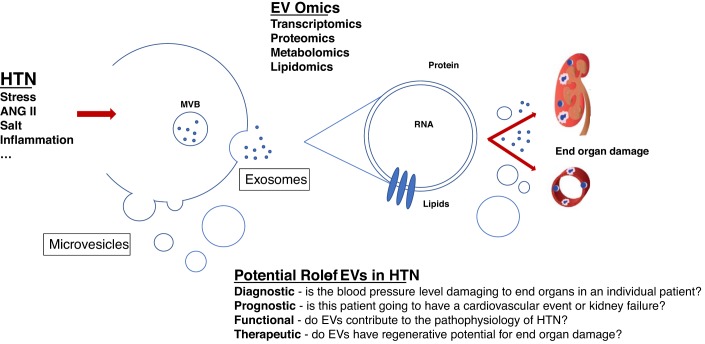Fig. 1.
Upon various stimuli (shear and oxidative stress, inflammation, salt, and ANG II), extracellular vesicles (EVs) can be released from all cells in the body, e.g., endothelial cell-derived EVs are secreted into the circulation or kidney-derived EVs, such as EVs of podocyte origin, into the urine. Smaller EVs (<100 nm, also called exosomes) are released from multivesicular bodies (MVBs) when these fuse with the outer membrane; larger EVs (100–1,000 nm, also called microvesicles) are secreted through a blebbing process. These EVs carry proteins/markers of their parent cell, RNA (mRNA and microRNA), carbohydrates, and different types of lipids. Their role has been described as diagnostic, prognostic, functional, and/or therapeutic. HTN, hypertension.

